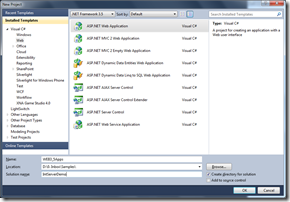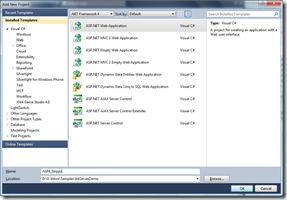Session is the most important state management mechanism for a web application. In ASP.NET we are having two type of state management
1. In Process
2. Out Process
“In process” is the by default session storage mode for ASP.NET Web application. When it comes under Out Process we can use either of state server or SQL Server to persist our session data.
Here I am going to describe one new features added in ASP.NET 4.0 realted with Session. If you want to know about when to use session, what session mode to use, how to configure the session storage please read one of my article “Exploring Session in ASP.NET” published at CodeProject.
In case of In Process, session data stored in In memory of worker process. But when we are talking about “OutProc” session mode, we need to ensure that session data should be “Serialized” first . So, when we are moving session data from Web Server to Out Process Server ( State Server or SQL Server ) it can be a performance overhead based on the size of data that we are stroing in Session.
ASP.NET 4.0 comes us with a new option for compressing the Session data with Out Process Session mode. To enabling this functionality we need to add “compressionEnabled=”true” attribute with the SessionMode in web.config . Web.config entry would be look like below,
<sessionState mode="SQLServer" sqlConnectionString="Integrated Security=SSPI; data source=.;" <em>compressionEnabled="true" </em>allowCustomSqlDatabase="true">
This will compress / Decompress the session data during serialization / deserialzation of session data. ASP.NET 4.0 used System.IO.Compression.GZStream class to compress the session mode. One more important things to remember that use of compression mode is useful when we are storing large number of data in session because for every request it will going to use Gzip Compression/ Decompression going to be used to access the session variable.
Hope this will helps you !


